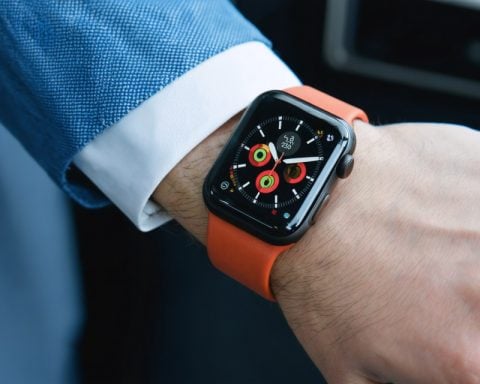- Italian tennis player Jannik Sinner faces a three-month suspension after testing positive for banned substances, attributed to inadvertent contamination.
- WADA’s acceptance of Sinner’s claim raises concerns of favoritism and inconsistency in disciplinary actions.
- The timing of Sinner’s suspension ending just before the French Open is controversial among fellow players like Novak Djokovic.
- Discrepancies in doping penalties, highlighted by cases like Simona Halep and Tara Moore, provoke debates about fairness in the sport.
- Calls for reform emphasize the need for transparency and consistency in doping adjudications.
- The sport is urged to ensure a level playing field where justice is not influenced by status or resources.
A crackle of discontent echoes through the tennis halls as the sport’s crème de la crème contemplates the curious case of Jannik Sinner. The Italian prodigy, known for his blistering returns, now finds himself embroiled in controversy. After testing positive for banned substances, Sinner received a three-month suspension, sparking whispers of favoritism among his fellow athletes.
The World Anti-Doping Agency (WADA) accepted Sinner’s claim of inadvertent contamination by his physio, yet the agency curtly reminded that responsibility ultimately rests on the athlete’s shoulders. His suspension ends just in time for him to swing on the clay courts of the French Open. Players like Novak Djokovic and Liam Broady murmur that the timing’s too precise to be mere chance.
As the sun sets over the Qatar Open, Djokovic isn’t alone in voicing his concerns about the justice—or lack thereof—displayed in handling doping cases. The echoes of inequality grow louder against the quiet fairness that sports promise. With heavyweights like Simona Halep and lesser-known players such as Tara Moore experiencing more severe penalties or longer investigations, the dissonance in outcomes leaves many questioning the system’s integrity.
Halep’s prolonged ordeal and Moore’s extended suspension highlight a troubling inconsistency. Such cases prompt a call from the players for reform. Accusations that the justice meted out depends on one’s status and legal resources cast a shadow on the sport meant to celebrate merit and athleticism.
The lingering debate raises a crucial point: the need for transparency and consistency in doping adjudications. Tennis must reexamine its anti-doping processes to ensure fairness prevails, pushing for a level playing field where everyone, regardless of ranking or fame, faces the same rules.
The Dark Side of Tennis: Unveiling Inconsistencies in Doping Policies
How-To Steps & Life Hacks: Navigating the Tennis World Amid Controversies
Athletes and tennis enthusiasts looking to understand and navigate the complexities of doping regulations should follow these steps:
1. Educate Yourself: Understand the substances banned by the World Anti-Doping Agency (WADA) and the potential for contamination.
2. Engage Expert Help: Employ knowledgeable support staff, including nutritionists and legal advisors, to avoid inadvertent violations.
3. Keep Records: Maintain detailed logs of supplements and medications consumed and consult with experts if uncertain about compliance.
4. Know Your Rights: Familiarize yourself with the appeals process and organize your defense swiftly should any allegations arise.
5. Advocate for Change: Engage with regulatory bodies to push for a more transparent and consistent doping adjudication system.
Real-World Use Cases: The Impact on Careers
Jannik Sinner’s predicament underscores the real-world consequences athletes face due to inconsistencies in doping policies. For players of all ranks, a suspension can dramatically alter career trajectories, affecting rankings, endorsements, and public perception.
Market Forecasts & Industry Trends: The Demand for Greater Fairness
As public scrutiny intensifies, the sports industry might witness increased calls for reform. Experts anticipate more sophisticated testing methods and a push for transparent adjudication processes. This development could lead to technological investments and policy overhauls in sports organizations globally.
Reviews & Comparisons: Examining the System
Comparatively, Sinner’s case appears lenient when set against Simona Halep’s prolonged investigation and Tara Moore’s extended suspension. Critics argue that these discrepancies highlight a systemic favoritism towards high-profile athletes, undermining the fairness that sports claim to uphold.
Controversies & Limitations: Fault Lines in Anti-Doping Policies
Current controversies highlight significant gaps:
– Inconsistency in Punishment: The perceived disparity in treatment between prominent figures and less-known athletes raises fairness concerns.
– Faulty Assumptions: Relying on athlete responsibility without considering their training ecosystem and potential contamination leads to contentious rulings.
Pros & Cons Overview: Balancing Act in Adjudication
Pros:
– Ensures athlete accountability.
– Maintains strict adherence to anti-doping regulations to protect integrity.
Cons:
– Discrepancies create perceptions of bias and favoritism.
– Inadvertent contamination issues highlight flaws in rigid systems.
Actionable Recommendations
For players, administrators, and fans committed to fairness in sports, consider these recommendations:
– Advocate Firmly: Encourage sports organizations to adopt clearer, more uniform guidelines.
– Promote Transparency: Push for public disclosure of doping investigation criteria to instill trust in regulatory bodies.
– Support Athlete Education Programs: Emphasize comprehensive educational resources addressing compliance and inadvertent violations.
Insights & Predictions
As tennis grapples with these challenges, stakeholders will likely push for a more balanced and transparent system that addresses current disparities and enhances fairness in the sport. Reform efforts may be met with resistance initially, but the demand for equal treatment could drive significant changes.
For further insights into the broader sports landscape and evolving industry standards, visit the World Anti-Doping Agency.



















